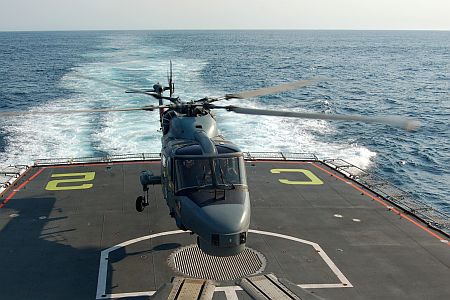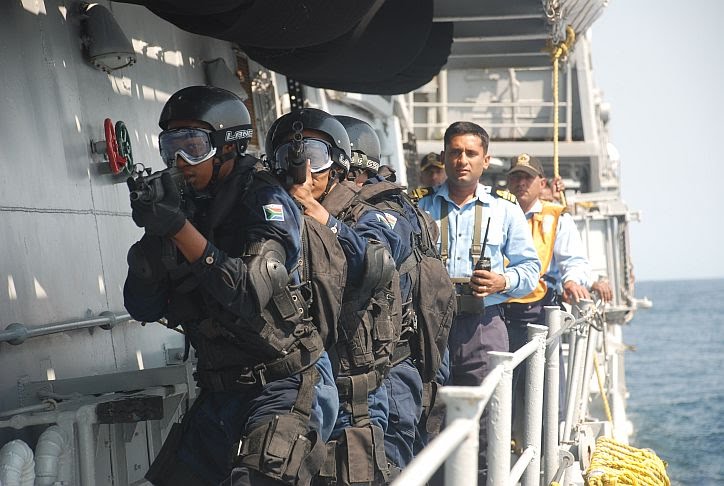Shtil-1 for Indian Navy, fresh memoirs
Defunct Humanity: Shtil-1 for Indian Navy, fresh memoirs
A serious test passed "Altair" when working on ships built for India with "Kashmir" AA system. Already in Soviet times, under a contract with India, our country started to supply anti-aircraft missile systems of medium-range "Shtil" to the ships of Indian Navy. The complexes were developed by "Altair". Delivery policy documents was carried out separately for different plants, but a prime contractor, responsible for the complex as a whole, was not pointed. In the early 90-ies our equipment was supplied and installed at the Indian ships. Testing began with failures. Missiles did not hit the targets. Who's to blame? Each vendor has starting to prove his innocence.
Then Rosvooruzheniye "addressed to Altair and required sending a team of specialists headed by chief designer Alexander Sergeyevich Yevstigneyev to deal on the spot. And here revealed the failures of Indian designers on placement of equipment, the choice of general ship radar and other interfaced with SAM "Kashmir" systems. Our shipbuilders were not up to par too. It was spoken about inability of our complex to provide the required characteristics.

Evstigneev displayed enviable persistence, presented a compelling argument, proving the opportunity to correct the situation by software change. It was proved the need for an additional contract directly with the institute (Altair) for development a new memory block with installed new BIOS program and technical documentation on the complex as a whole. The contract was signed. All questions on the Indian ships have been resolved, complex works as expected. "Altair" and the company Rosvooruzheniye "got serious lesson: the responsible part of such complex contract, like anti-aircraft missile system supply, must include its main developer. Further contracts "Altair" was used to conclude on such conditions.

In 1997, India signed a contract for the construction of three frigates of Project 1135.6 at the Baltic plant with the installation of SAM "Shtil". In order to participate in this very lucrative contracts, the management of the 'Altair' took the decision to modernize "Shtil" with the introduction of a new computing hardware and new anti-aircraft missiles 9M317E. The complex was named "Shtil-1. Sergey Sokolov Headed the development . This modernized complex was decided to install on the new Indian ships.
The Work on "Shtil-1" actually became a turning point in "Altair" modern history, took as a decade. First time in its history the Institute (Altair) took to develop, manufacture, install and test the final product - anti-aircraft missile system in cooperation with others. Director-General SA Klimov has decided to change the entire structure of the company for this purpose.

Particularly difficult was to address the question of the serial manufacturing. According to the assessment of 'Altair's chief VD Ponomariov the state of 'Altair' serial production capability doesn't allowed to deliver the complex in time. This was complicated by the fact that the Serpukhov Plant RATEP, the main producer of ship serial air defense missile systems, refused to participate in the manufacture of ZRK "Shtil-1. The newly appointed head of the pilot production VI Kharitonov, together with his deputies FM Shikin and VI Verbitsky have moved aggressively to reorganize and prepare manufacturing line for the new product.
In an unprecedented short period of time - two years, whole design documentation for the export complex has been reworked, a new mathematical software was developed, hardware was made and carried out the bench tests, which confirmed the readiness for serial manufacturing for product as a whole. Despite vigorous attempts by our detractors to prevent the delivery of complex "Shtil-1" in due time, he was shipped to the shipyard between the first members , and in March 2002, has successfully completed the firing tests at a ship Program State tests program. However, the acceptance tests were not impressed.
There is a wonder why this class of complex, which works well on the domestic ships and ground forces, failed on the Indian frigate. Firstly the suspicion fell on anti-aircraft missiles. But they have checked the Army's complex in the same series as the ship. The Results were brilliant. A Miniature target was hit by the first missile struck.
Almost six months' work of a special commission allowed to understand all. It turned out that it is not in "Shtil-1", as it tried to prove our detractors, but it's the mistakes made in the whole design of the ship and errors in testing. There was a serious error - one of the ship gun systems worked on the same frequency as the radio equipment missiles. The powerful impact of this gun radar on the rocket when it was in flight, impeded the missile's work-board, which leads to negative consequences.
But Instead correction mistakes in the design and construction of the vessel, ie create the conditions for the normal functioning of the complex "Calm-1", the leadership of the Baltic plant prefered to solve the problem of electromagnetic compatibility of radio electronic equipment of the new ship via changes in the serial complex "Shtil-1". This position has led to the failure to transfer the ship to the customer in 2002, like it was planned under the terms of the contract. He was handed over to India a year later.
Together with "Amethyst", a developer of naval gun systems, it was managed to find the original technical solutions that reduce the influence of different radio-electronic devices installed on the ship. a number of measures to adapt the complex Shtil-1 to ship was developed and agreed with the Indian experts
Further shooting tests have showed excellent results and have confirmed the effectiveness of taken measures, all anti-ship missiles that were used as the target, were shot down. Sent to the customer, three ships of the project 1135.6 "Talwar", "Trishul", "Tabar successfully serving in the naval forces of India.
In the tests of "Shtil-1" SM Sokolov, AM Tomsk, AV Borzunov, EF Glagolev, AV Semigin, NV Alekseev, BS Stavitsky, VP Struchkov, VI Osipenko, VV Danilov actively participated.
Soon after the completion of pr. 1135.6 ships India has designed its analogue of this project - the frigate "project-17", between the weapons of which SAM Shtil-1 and EMC (electromagnetic compatibility) equipment "Podzagolovok" were also includes. The signed contract provided supply of three sets of these products. Despite some difficulties, the deliveries of "Altair" were performed just in time with consistently high quality. The completion of project 17 ships and the final testing of weapons by Indian side was to completed in 2008-2009. In 2006, the contract to build three more frigates of Project 1135.6 was signed, it provides the organization of repair companies in India, including the SAM Shtil-1 and EMC hardware "Podzagolovok."
(Source: an off-line Russian book via a military Russian forum)









